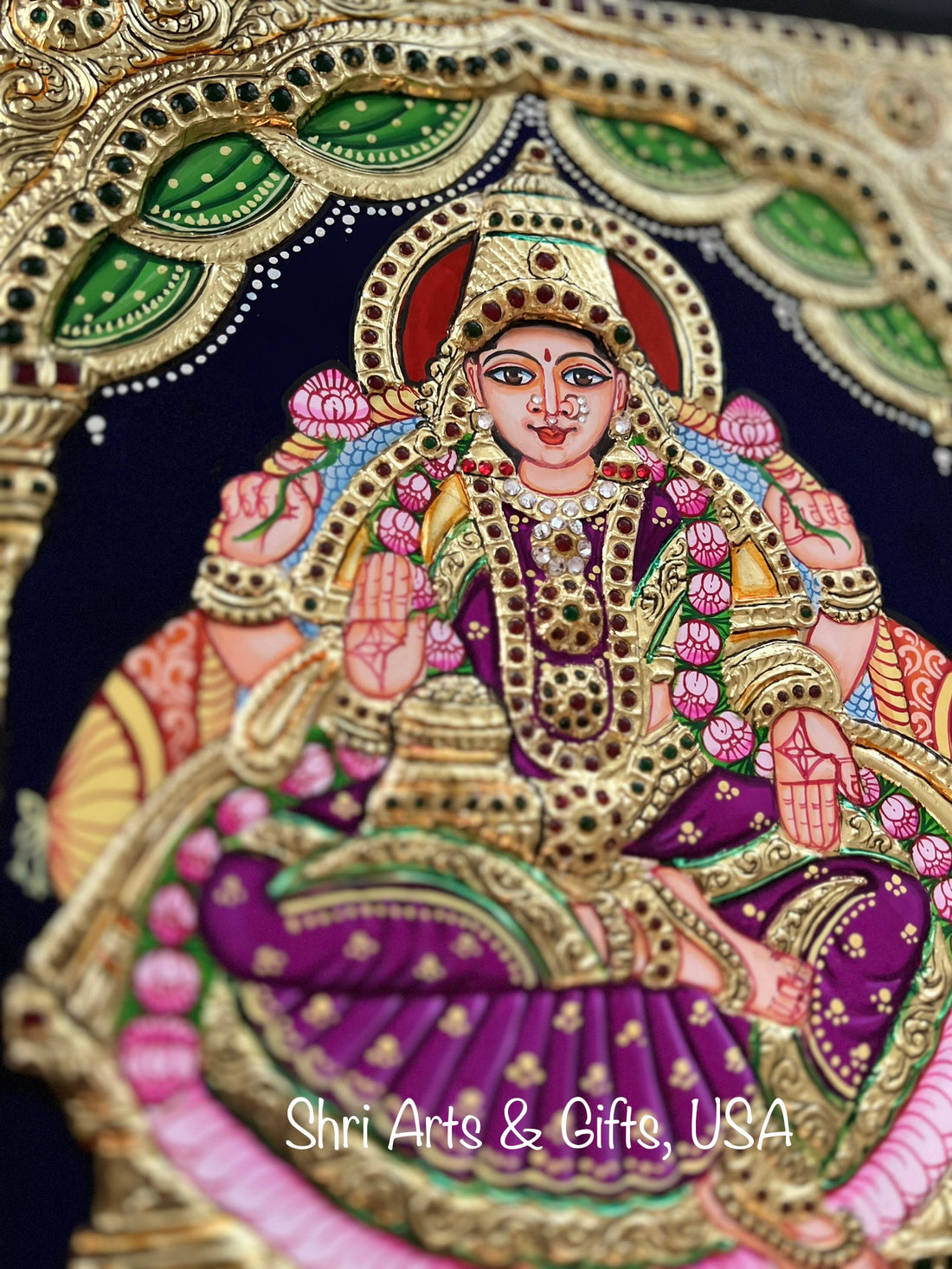Tanjore paintings, also known as Thanjavur paintings, captivate the eye with their vibrant colors, intricate details, and rich symbolism. But the story behind these captivating artworks stretches back centuries, revealing a fascinating journey through time and artistic evolution.
Early Beginnings (9th - 16th Century):
The seeds of Tanjore painting were sown during the reign of the Cholas (9th - 13th century) in South India. This period witnessed the development of temple art, where murals adorned the walls of majestic structures. These early paintings laid the foundation for the distinctive style that would later blossom into Tanjore painting.
The Golden Age (16th - 18th Century):
The Nayaka (16th - 17th century) and Maratha (17th - 18th century) rulers of Tanjore were ardent patrons of art and literature. This period marked the golden age of Tanjore painting. Artists flourished under royal patronage, refining techniques and pushing the boundaries of creativity.
-
Hallmark Characteristics: The use of gold leaf became a defining feature, adding a touch of opulence and divinity to the paintings. Natural pigments derived from minerals and vegetables brought the figures and landscapes to life with vibrant hues. Meticulous detailing, especially in the depiction of jewelry, clothing, and facial expressions, became another hallmark.
-
Subjects and Themes: Primarily, Tanjore paintings depicted Hindu deities, especially Krishna, Shiva, Durga, Saraswati, and others. Scenes from mythology and epics like the Ramayana and Mahabharata were also popular subjects.
The 19th and 20th Centuries:
The 19th century saw a decline in royal patronage, impacting the production of Tanjore paintings. However, the art form continued to be practiced by families who had passed down the skills for generations. The 20th century witnessed a revival of interest in Tanjore painting, with artists incorporating contemporary themes alongside traditional subjects.
The Present and Beyond:
Today, Tanjore painting remains a vibrant art form, cherished for its cultural significance and aesthetic appeal. Artists continue to create stunning pieces, ensuring the legacy of this art form lives on.
Conclusion:
Exploring the history of Tanjore painting is like embarking on a captivating journey through time. From its humble beginnings to its flourishing golden age and enduring legacy, this art form continues to captivate audiences with its beauty and cultural significance. As we move forward, Tanjore painting promises to evolve further, reflecting the changing times while retaining its essence and timeless appeal.

